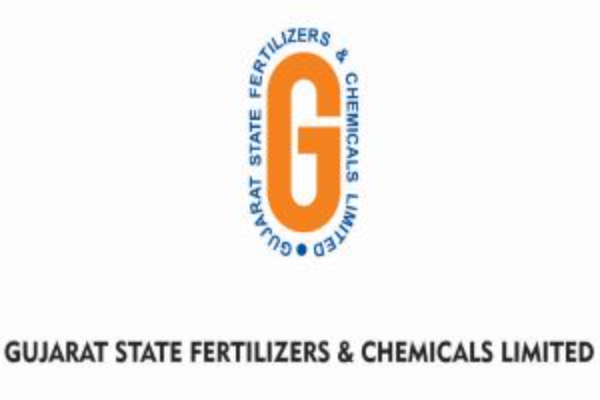Urea sales declined 73% due to exclusion of Rs. 149 crore project-linked trial sales and stabilisation issues

Gujarat State Fertilizers and Chemicals Ltd. (GSFC) has posted net profit of Rs. 140 crore in Q1 FY26 as compared to Rs. 93 crore in Q1 FY25. The company also posted total revenue higher in Q1 FY26 at Rs. 2,212 crore as compared to Rs. 2,193 crore in Q1 FY25. Operating EBIDTA in Q1 FY26 was Rs. 201 crore as compared to Rs. 117 crore in Q1 FY25.
In Q1 FY 25–26, revenue remained steady YoY while EBITDA margin improved from 8% to 11%. Fertilizer EBIT rose from Rs. 86 crore to Rs. 137 crore due to higher trading (notably NPK), strong APS/AS sales, and improved realisations in P&K fertilizers.
Urea sales declined 73% due to exclusion of Rs. 149 crore project-linked trial sales and stabilisation issues. Raw material trends were mixed—NG and ammonia prices softened, while P₂O₅ and sulphur/SA acid saw sharp increases. Industrial Products segment turned profitable (Rs. 25 crore EBIT) on the back of stronger Ammonia and HX sales, despite lower spreads and core volumes.
During Q1 FY 26, GSFC commissioned 15 MW Solar Power Project at Charanka, Urea-II Revamping Project and Participation in GIPCL’s 75 MW Solar Power Project.
According to the company, the Caprolactam-Benzene spread is expected to remain under pressure in Q2 FY 2025–26 due to oversupply, prolonged economic slowdown in China, and continued influx of cheaper Chinese imports, which may depress prices across the entire Nylon value chain. Melamine demand is expected to remain stable in both domestic and export markets, while demand for other industrial products is also likely to sustain.
However, pricing for key products may face headwinds from low-cost Chinese imports. Overall, the company anticipates stable demand and turnover in the Industrial Products segment during the quarter.
Outlook:
The southwest monsoon continues to progress at a healthy pace, supporting Kharif sowing activities and creating a favourable environment for Agri-input demand during Q2 FY 2025–26.
However, Indian fertilizer industry is likely to face headwinds in forthcoming quarter on account of elevated prices of key raw material such as phosphoric acid and finished fertilizers like DAP, NPK etc., which will complicate imports and production of fertilizers.
It is probable that the Maximum Retail Price (MRP) of NPK fertilizers would have to be revised upwards to accommodate the escalation in input costs.
Policy interventions by DoF, will play a key role in shaping strategies going forward. The company intends to adopt a balanced production and import mix of DAP and non-DAP fertilizers to optimize cost efficiency and maximize overall sales realisation in the upcoming quarter.
Subscribe to our newsletter & stay updated.